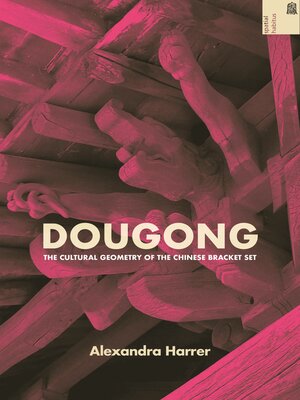Dougong
ebook ∣ The Cultural Geometry of the Chinese Bracket Set · Spatial Habitus: Making and Meaning in Asia's Architecture
By Alexandra Harrer

Sign up to save your library
With an OverDrive account, you can save your favorite libraries for at-a-glance information about availability. Find out more about OverDrive accounts.
Find this title in Libby, the library reading app by OverDrive.



Search for a digital library with this title
Title found at these libraries:
| Library Name | Distance |
|---|---|
| Loading... |
This is the first English-language study devoted to dougong, the block-bracket cluster widely regarded as the epitome of traditional Chinese architecture. For almost two millennia, dougong have been central to the multipartite frame structure of wooden buildings, connecting columns with beams, supporting projecting eaves, and providing resistance to earthquake damage. They have enabled and required builders to ensure both the functionality and the moral dimension of their designs through the thoughtful use of appropriately graded timbers and corresponding methods of modular design that determine the size and quality of a building in keeping with the social standing of its owner.
Richly illustrated with original high-quality photographs and drawings, this book explores the engaging story of dougong as technical artifacts that embody Chinese culture. Alexandra Harrer delves into the previously unresolved relationship between standard dougong and their regional and local variations in the rhetoric of Chinese construction, offering an alternative to sociopolitical caste as a means of interpreting these differences. She untangles the lengthy selection process and trial-and-error development of the block-bracket cluster before codification to reveal how design idiosyncrasies derived from an unlikely combination of legal codes and ethical imperatives. For example, dougong with arms projecting at a 45- or 60-degree angle from the wall plane—long dismissed as unorthodox—are shown to be a subtle design expression that yields to authority while it seeks to exploit archi-cultural standards. Harrer argues that the ethical dimensions of graphic shapes and the culturally charged space that dougong occupy are key to understanding this creative process.







